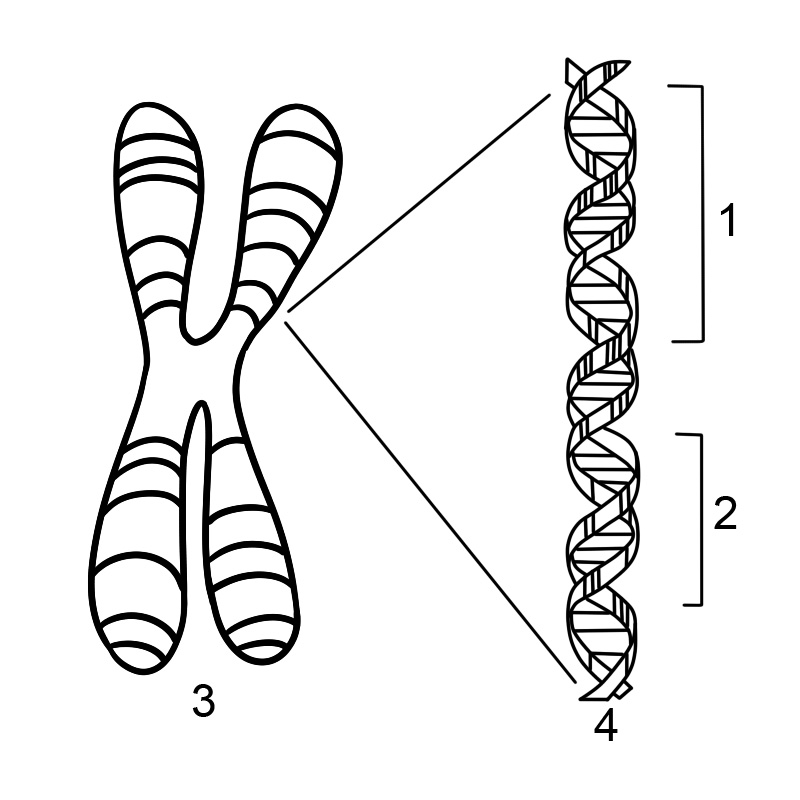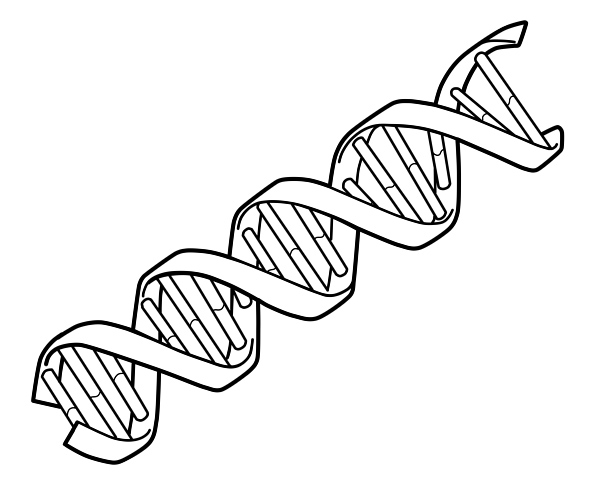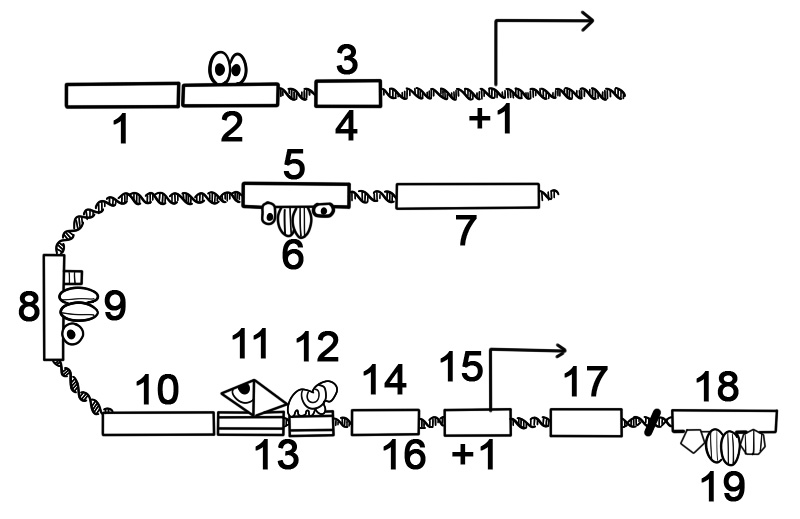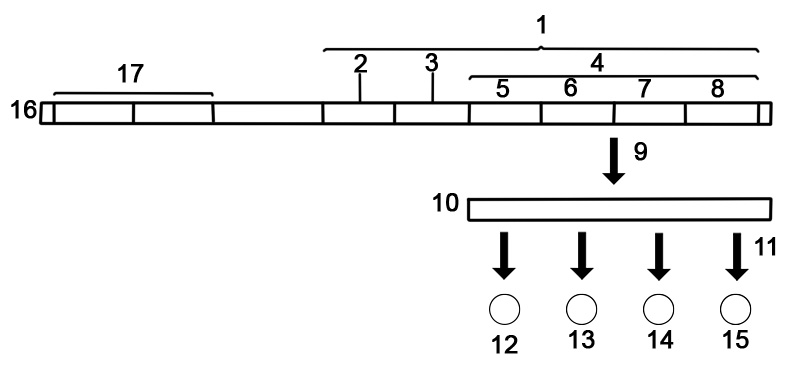Genes (say: jeenz) play an important role in determining physical traits — how we look —and lots of other stuff about us. They carry information that makes you who you are and what you look like: curly or straight hair, long or short legs, even how you might smile or laugh. Many of these things are passed from one generation to the next in a family by genes.
By the end of this lesson, you'll know

A gene is a sequence of nucleotides in DNA or RNA that encodes the synthesis of a gene product, either RNA or protein. A chromosome is made up of a long DNA strand that has many genes. A human chromosome can have approximately 500 million base pairs of DNA with thousands of genes.
In biology, a gene refers to a sequence of nucleotides in RNA or DNA coding for the molecule that has a function. During the expression of a gene, the DNA is first copied into RNA. The RNA can be directly functional or it can be the intermediate template for a protein performing a function. The transmission of genes to the offspring of an organism forms the basis of the inheritance of the phenotypic traits. These genes make up different DNA sequences known as genotypes. Genotypes together with environmental and developmental factors determine what the phenotype will be. Most biological traits are influenced by polygenes (many different genes) and gene-environment interactions. Some genetic traits are visible like eye color, and some are not like blood type.
It is possible for genes to acquire mutations in their sequence. This leads to different variants called alleles in the population. These alleles encode slightly different versions of a protein that cause phenotypical traits. Genes evolve as a result of natural selection or survival of the fittest and genetic drift of the alleles.
Here is an illustration depicting the double-helix strand of DNA.

Most organisms encode their genes in long DNA strands. DNA stands for deoxyribonucleic acid. DNA is made up of a chain that consists of four types of nucleotide subunits, each made up of a five-carbon sugar (2-deoxyribose), a phosphate group, and one of the four bases adenine, thymine, cytosine, and guanine.
Two DNA chains twist around one another to form a DNA double helix with the bases pointing inwards and adenine base pairing to thymine and guanine to cytosine. The specificity of base pairing happens because adenine and thymine align to form two hydrogen bonds. Cytosine and guanine on the other hand form three hydrogen bonds. The two strands in a double helix must be complementary with their base sequence matching such that the adenines of one strand are paired with the thymines of the other strand, and so on.
The expression of genes encoded in DNA starts by transcribing the gene into RNA, a second type of nucleic acid whose monomers are made of the sugar ribose rather than deoxyribose as in DNA. RNA also contains the base uracil in place of thymine. RNA molecules are single-stranded and they are less stable than DNA. Genes that encode proteins are made up of a series of three-nucleotide sequences known as codons. The genetic code specifies the correspondence during protein translation between codons and amino acids. The genetic code is almost the same for all known organisms.
The structure of a gene consists of many elements of which the actual protein coding sequence is often only a small part. These include DNA regions that are not transcribed as well as untranslated regions of the RNA.
Genes contain a regulatory sequence that controls when and where expression occurs for the protein-coding region. First, genes require a promoter sequence. The promoter is recognized and bound by transcription factors that recruit and help RNA polymerase bind to the region to initiate transcription. The recognition typically occurs as a consensus sequence like the TATA box. A gene can have more than one promoter, resulting in messenger RNAs (mRNA) that differ in how far they extend in the 5' end. Highly transcribed genes have "strong" promoter sequences and other genes have "weak" promoters that form weak associations with transcription factors and initiate transcription less frequently. Eukaryotic promoter regions are much more complex and difficult to identify than prokaryotic promoters.
Enhancers increase transcription by binding an activator protein which then helps to recruit the RNA polymerase to the promoter; conversely, silencers bind repressor proteins and make the DNA less available for RNA polymerase. The transcribed pre-mRNA contains untranslated regions at both ends which contain a ribosome binding site, terminator and start and stop codons. In addition, most eukaryotic contain untranslated introns which are removed before the exons are translated. The sequences at the ends of the introns dictate the splice sites to generate the final mature mRNA which encodes the protein or RNA product
Below is the structure of a eukaryotic protein-coding gene.

Many prokaryotic genes are organized into operons, with multiple protein-coding sequences that are transcribed as a unit. The genes in an operon are transcribed as a continuous mRNA, referred to as a polycistronic mRNA. In this context, the term cistron is equivalent to gene. The transcription of an operon's mRNA is often controlled by a repressor that can occur in an active or inactive state depending on the presence of specific metabolites. When active, the repressor binds to a DNA sequence at the beginning of the operon, called the operator region, and represses transcription of the operon; when the repressor is inactive transcription of the operon can occur. The products of operon genes typically have related functions and are involved in the same regulatory network.
Below is the structure of a prokaryotic operon of protein-coding genes.
